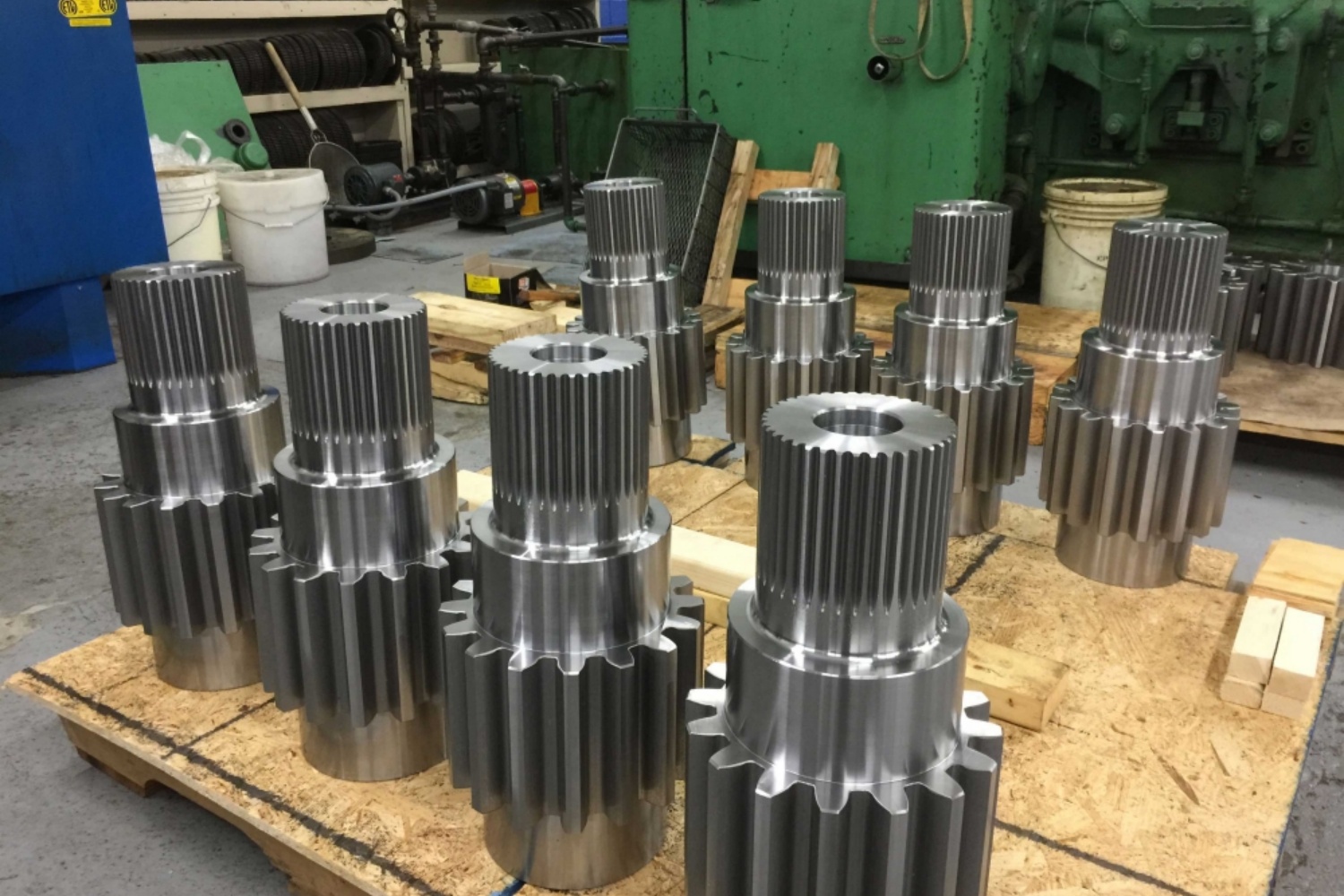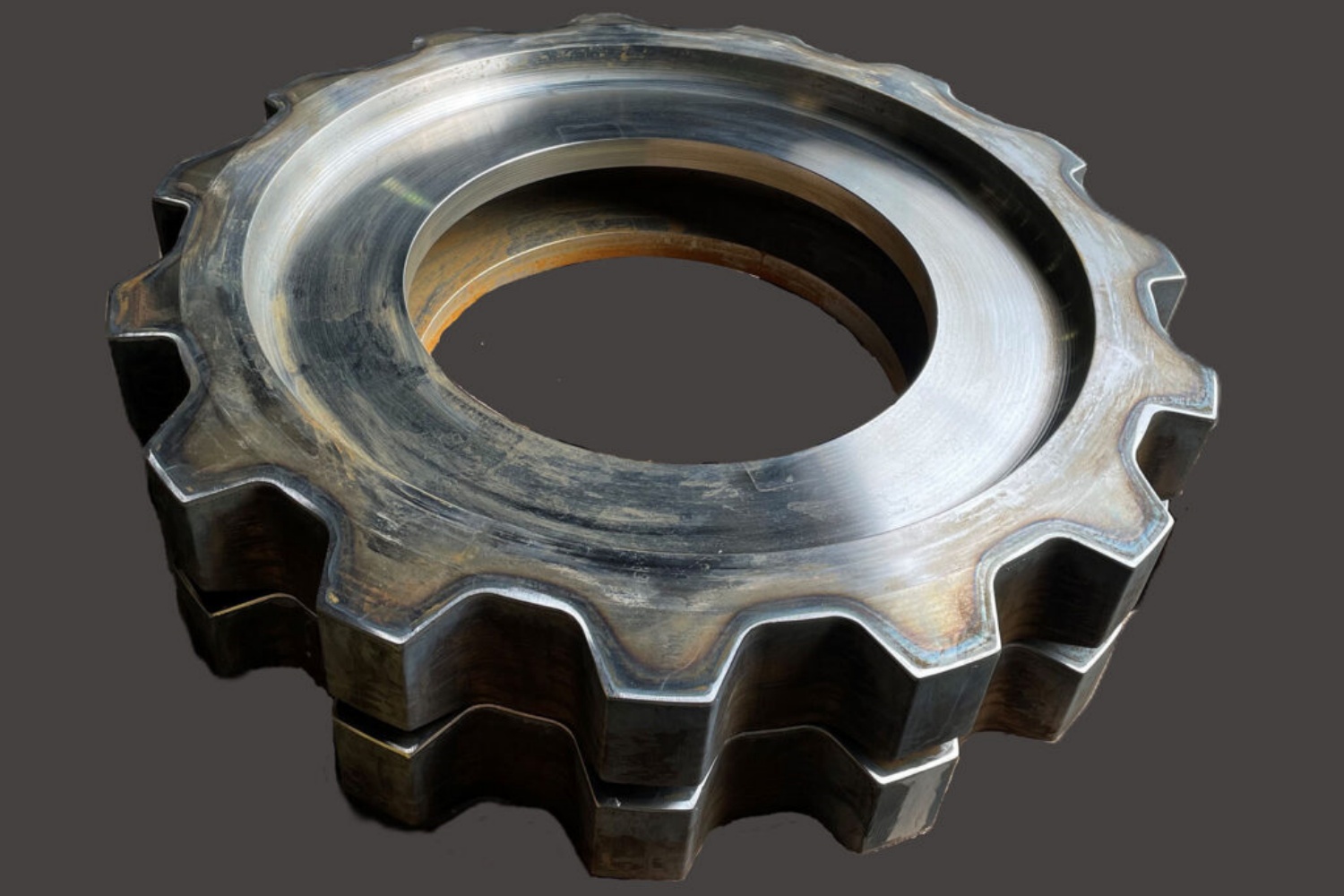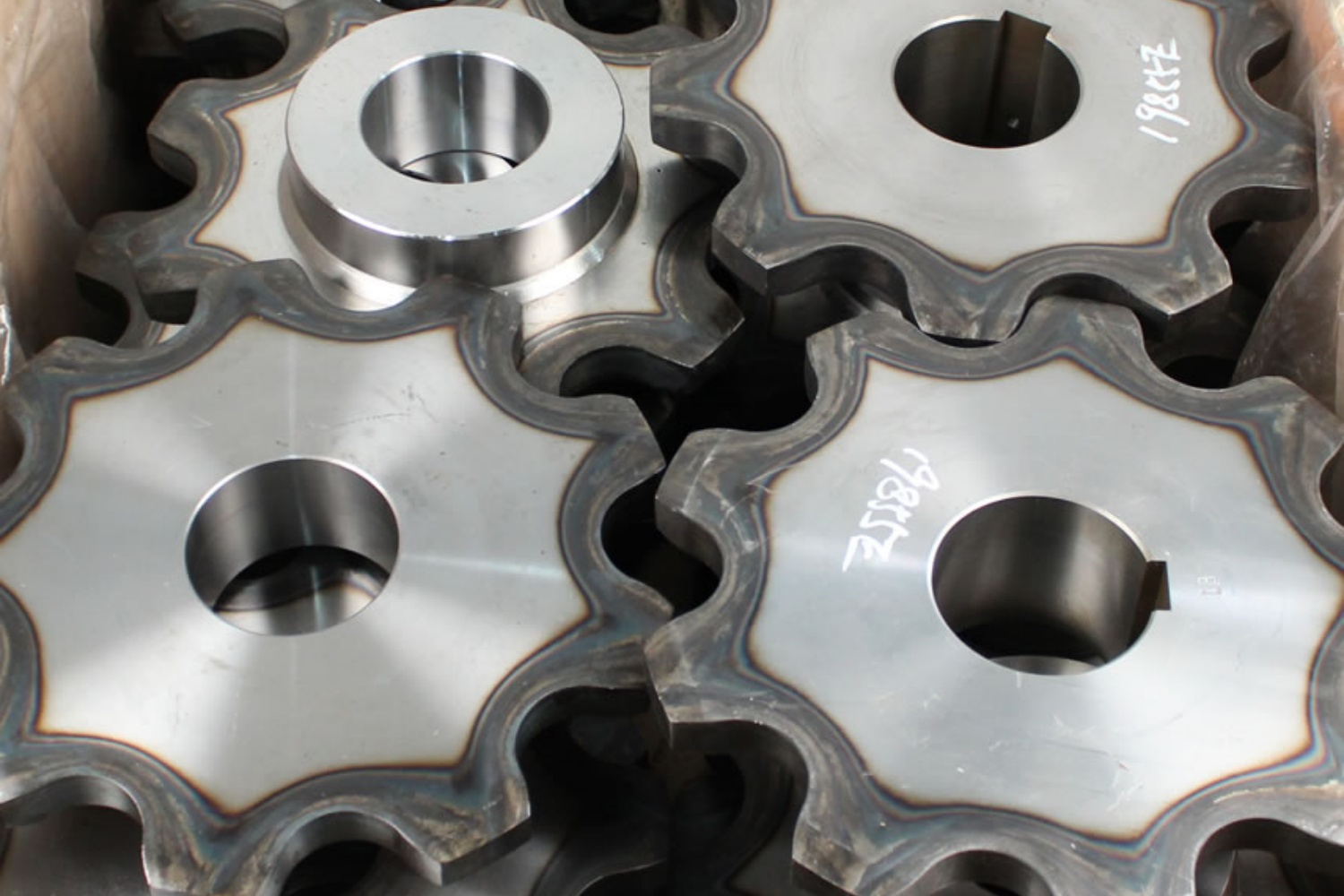Sprocket is one of the important parts of industrial machinery product transmission power. The sprocket has some characteristics such as heavy load and severe wear during the working process, so the sprocket must have good mechanical properties to ensure the reliability and stability of the mechanical product in operation. The materials of sprockets are generally C45, Q345B, 40CrMn and others. With forging process of the sprockets to directly forge into the formed blank parts can save materials and processing costs. The steps of forging are as follows:
- Calculation of materials to be used: design the finished blank according to the shape and structure of the finished sprocket, and accurately calculate the material distribution according to its cross-sectional area to get the materials’ weight of the finished blank.
- Cutting: according to 110-120% of the material used for the finished blank, the automatic band sawing machine cuts the material.
- Heating: the material is heated by medium frequency electric induction, and the heating temperature is required to be 1250-1280℃.
- Heading: Using the manipulator to clamp the heated material into the pier rough mold in the first 8000T friction press for pier roughening. After the pier roughen, the temperature of the blank is required drop to 1150-1200°C.
- Final forging: Using a manipulator to transfer the roughened blank to the final forging mold of the second 8000T friction press for final forging. After the final forging is completed, the temperature of the forging is required drop to 950-1050°C.
- Deburring: After the forged blank is cooled by air, the burrs are cut off with a CNC flame, and finally the finished blank is obtained.
- Machining: Making the finished blank into a finished sprocket.
CONTINUE READING
Related Posts
In the dynamic landscape of mechanical engineering, spline shafts have played a pivotal role in power transmission and motion control. […]
In the world of industrial machinery, sprockets play a critical role in the efficiency, performance, and durability of various equipment. […]
Conveyor sprockets are vital in material handling systems, driving the chains and belts that transport products across various industries. In […]




